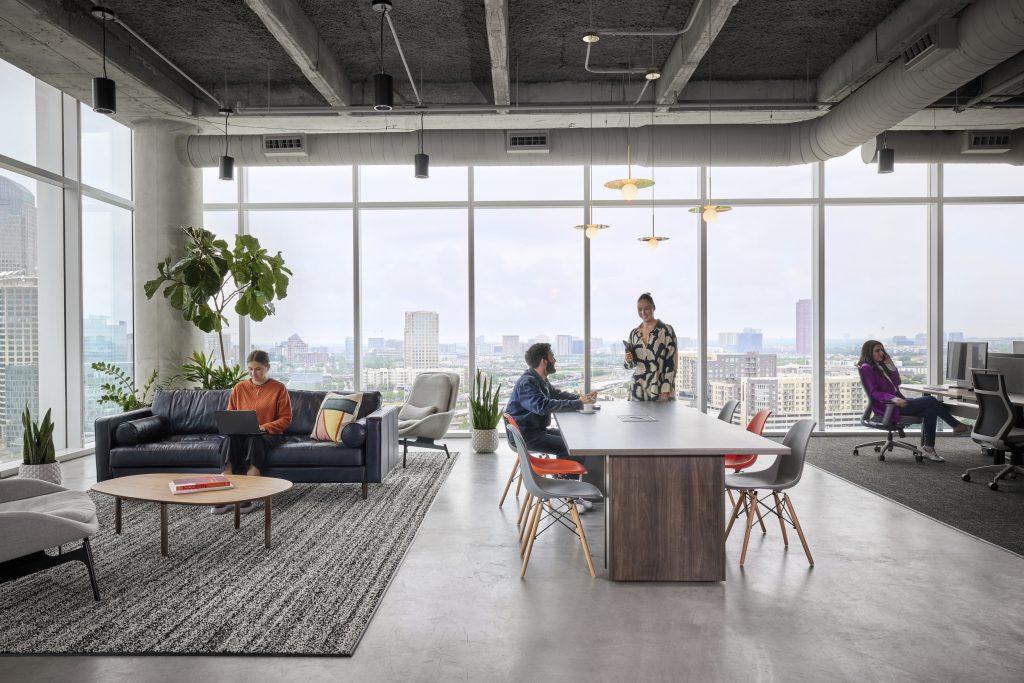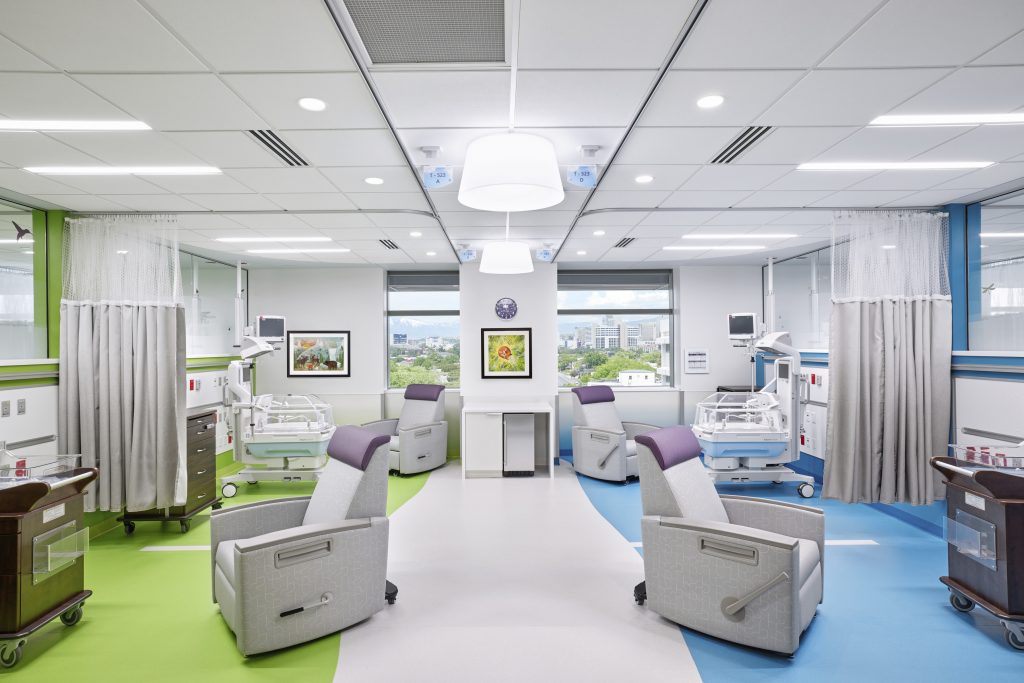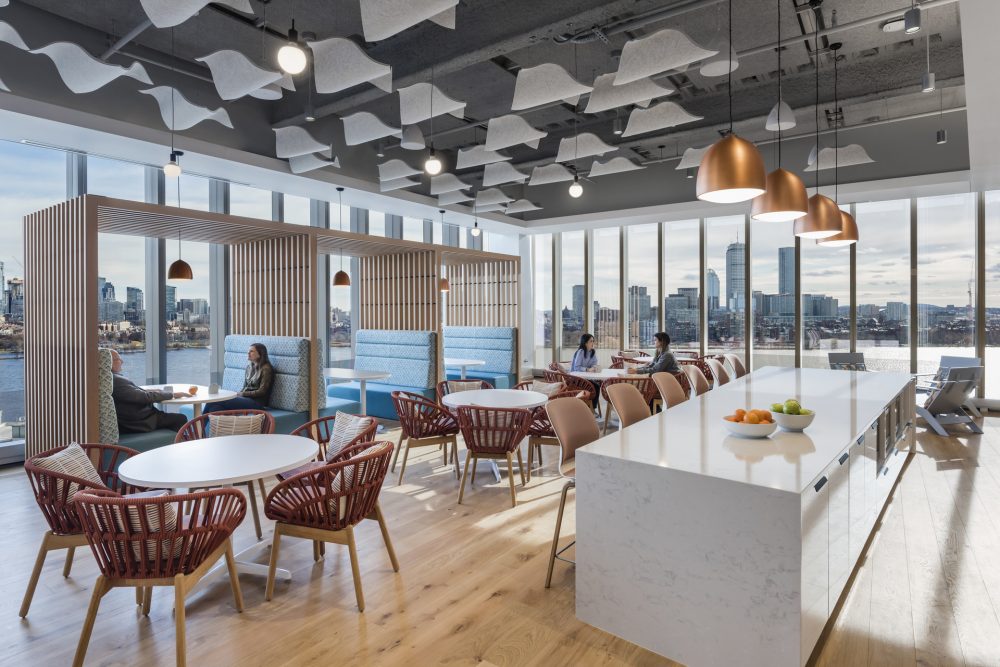Sarah Wicker from Perkins&Will sheds light on the importance of understanding sleep schedules for a more productive and inclusive work environment.
Most people are aware of their body clock.
They might even consider themselves an early bird or night owl.
What people don’t often know is how and when to work best in a team with a mix of body clocks, formally known as “chronotypes.”
And what leaders don’t often know is how to accommodate this hard-wired diversity—or that doing so can make teams stronger, healthier and more productive, as a group and as individuals.
What Are Chronotypes?
People have a limited ability to rewire natural sleep patterns. Everyone’s daily circadian rhythm follows a familiar arc, but from person to person there are significant differences in timing, peaks and troughs. These variances and their impact on natural sleep times and activity are called chronotypes.
Generally, people fall into one of three chronotype categories: morning, evening, and intermediate. Studies estimate roughly a quarter of the population is an evening type, hitting their stride later in the day, and about 16 percent of people are morning types (Adan & Natale, 2002). The difference in peak activation time between these two groups can be up to 12 hours, with some extremes within the categories preferring to go to bed as early as 7pm or as late as 4am (Chen et al., 2021).
Chronotypes affect more than when your head hits the pillow. They also impact alertness, predicting attention, focus, vigilance, enthusiasm, and physical exertion (Volk et al., 2023). Timing of peak circadian activation also affects behavior, cognitive function, athletic performance, and the ability to adjust to cultural norms. People generally consider morning types to be more conscientious, agreeable, and achievement-oriented, while evening types, conversely, are slightly more extroverted and show memory and intelligence advantages but demonstrate more neurotic traits (Chen et al., 2021; Roenneberg et al., 2019).

Sleep Deprivation at Work
Sleep is one of the most important biological influences on who people are and how they behave. A significant loss of sleep correlates to more injuries at work, more unethical conduct, and less self-regulation. When organizational norms prioritize work over sleep, it negatively impacts team performance (Barnes et al., 2015).
It’s important to note that the misalignment of sleep and work schedules isn’t isolated to a few extreme night owls.
Dr. Celine Vetter, an expert in the field of circadian rhythms and sleep, believes that a considerable majority, approximately 80 percent—80 percent!—of people work on a schedule that clashes with their internal clock.
Research shows that almost 97 percent of workers exhibit at least one fatigue-related risk factor (Laber-Warren, 2018).
Though more than half the population fits an intermediate chronotype—naturally waking between 7 and 8:30am and going to bed between 10pm and midnight—research suggests only a small fraction of people naturally wake up early enough to start work at 9am without experiencing sleep deprivation (Adan et al., 2012; Roenneberg & Merrow, 2016).
Sleep Deprivation and Health Outcomes
Sleep deprivation affects more than work performance. Evening types, who are more likely to be experiencing misalignment with their sleep schedule and work schedule, are more disposed to mental or psychiatric disturbances including depression and eating disorders (Au & Reece, 2017; Chen et al., 2021; Roenneberg, 2019; Walsh et al., 2022). A 2015 study of 64,615 nurses showed that work-chronotype misalignment significantly increased risk for Type 2 Diabetes (Vetter et al., 2015).
Evening types working traditional 9-to-5 jobs tend to “make up” for lack of sleep during the week by sleeping more on weekends. This common coping mechanism is called social jet lag. Social jet lag predicts a range of unhealthy behaviors, including poor food choices and a higher risk of becoming overweight and developing metabolic disorders.
Sleep Schedules in the Diversity and Inclusion Conversation
This is not just a productivity and general health issue, but also a diversity and inclusion issue. There are many reasons someone might run low on sleep on any given day, or week, or year, but chronotypes are lifelong forces, generally static throughout adulthood, and largely out of the individual’s control. This “hidden diversity,” when unaddressed, is holding people back for no fault of their own.
It is difficult to predict strengths and weaknesses outside of societal time constraints, but current research shows that evening types are more challenged in the traditional work environment due to their vulnerability to circadian and sleep disruption (Didkoglu et al., 2022). Evening types are less likely to be employed by “higher standing” jobs. They receive lower salaries, engage in riskier financial behavior, and collect preterm disability pensions (Bonke, 2012; Wang & Chartrand, 2015). They receive lower levels of social support, and they are more likely to be misdiagnosed at work as lazy (Walsh et al., 2022).
Do performance variations between chronotypes point to real, underlying differences, or—leadership should ask—do they reveal that the conventional work schedule is not a neutral force?
A New Era of Inclusive “Circadian Leadership”
Leadership has long overlooked circadian rhythms and chronotypes. Ignoring these variables is not only a missed opportunity for a more productive, healthier team, it’s a recipe for discrimination: in performance evaluations, supervisors with earlier chronotypes have rated evening types who start later in the day as lower performers and less conscientious than morning-type counterparts with similar performance levels (Volk et al., 2023)16. Supervisors with later chronotypes did not engage in the same discriminatory behavior.

This isn’t just a matter of inclusion—it’s a matter of organizational success. When leadership does not accommodate and optimize diversity and inclusion goals, a sense of exclusion can complicate efforts to attract and retain talent.
Post-COVID, organizations are more interested in understanding the broader employee experience. People are re-thinking the standard workplace experience and design. Forward-thinking organizations are working to optimize the employee experience and organizational behavior. By incorporating a “circadian leadership” approach that considers chronobiology, organizations can help conserve resources, strengthen team dynamics, minimize fatigue and fatigue-related risks, and improve overall employee well-being and effectiveness (Barnes et al. & Watson, 2019; Volk et al., 2023; Richardson & Shipp, 2021).
When employees feel empowered to align their work schedules with their natural chronotypes, without fear of bias or discrimination, companies can cultivate a more engaged, productive, and resilient workforce, positioning themselves at the forefront of a new era of circadian-centric leadership.
A New Resource: The Chronotype CoLab
Leaders don’t have to start from scratch. A prototype called Chronotype CoLab is one option to kickstart chronotype-informed work.
Chronotype CoLab offers a framework to bring awareness, reduce bias, and create stronger team dynamics based on open discussions and new knowledge. The comprehensive toolkit is designed to help small, established teams or organizations with less than 12 people in a three-hour collaborative workshop. The workshop facilitates open discussion and aims to help teams understand challenges and opportunities, while optimizing team dynamics around individual chronotypes.
Optimizing Your Team’s Work Schedule
The first step in the workplace is education. Biases can be addressed through greater awareness, discussions, and training. Leaders who understand circadian differences are also prepared to pass this chronobiology perspective along. They can teach employees about obtaining adequate sleep, the dangers of fatigue, and the availability of sleep-enhancement and alertness-management strategies, which can help prevent and treat depressive symptoms (Caldwell et al., 2019; Au & Reece, 2017).
Understanding the sleep-performance connection will help people discover optimal habits and plan their days effectively. Morning chronotypes, for example, tend to be more ethical, creative, and make better investment decisions earlier in the day, and the opposite is true for night owls. With self-understanding, employees can know which hours are best reserved for emails and administrative tasks, when energy is waning, and which are prime for high-energy, complicated work. With a flexible schedule, people may even see additional time savings by avoiding rush hour traffic.
How Does Design Affect Sleep?
While awareness and understanding from leadership is potentially the strongest way to support different chronotypes in the workplace, designers have tools of their own. A workplace environment ideal for alertness and reduced fatigue has humidity and noise control, ergonomic furniture, and adequate and proper lighting.
Not all light is equal: artificial light can disrupt natural circadian rhythms, while access to daylight can increase productivity, satisfaction, and overall well-being. In general, larger windows mean better circadian lighting (Alkahtatbeh & Asadi, 2021).

Every room has a “circadian potential,” the maximum amount of space with daylight-enough to sync a person to their natural rhythm (Bellia & Fragliasso, 2021). Both the intensity and spectrum of light can impact circadian rhythms, so workplace architects and designers have multiple factors to consider. One study showed that changing the view direction alone changed a space’s circadian potential by 58 percent (Alkahtatbeh & Asadi, 2021). North-oriented windows decreased the circadian potential by 23 percent, while east- and west-facing windows decreased it by 16 percent. Window head height, building orientation, shading devices, external obstructions, and room depth are also variables to consider.
Work Schedules Don’t Have to be as Stubbornly Set as Chronotypes
Organizations are overlooking the importance of good sleep. Fatigue in the workplace can impact decision-making, memory, reaction time, efficiency, safety, and overall performance, and these outcomes can have significant financial impacts on the organization, industry, and economy. And, crucially, individuals can’t fully address this fatigue through personal choices.
Data suggests most people are poorly served by conventional working hours. It is time for leaders to intervene with dedicated, evidence-based efforts and for designers to give their attention to ongoing circadian lighting research. There is a stigma to fight and flexibility to explore.
References
- Adan A., Archer S., Hidalgo M., Di Milia L., Natale V., & Randler C. (2012). Circadian typology: a comprehensive review. Chronobiology International, 9, 1153-75. doi: 10.3109/07420528.2012.719971. Epub 2012 Sep 24. PMID: 23004349.
- Adan, A. & Natale, V. (2002). Gender differences in morningness-eveningness preference. Chronobiology International, 19, 709-20. 10.1081/CBI-120005390.
- Alkhatatbeh, Baraa J., and Somayeh Asadi. (2021). Role of architectural design in creating circadian-effective interior settings” Energies, 14, no. 20: 6731. https://doi.org/10.3390/en14206731
- Au, J., & Reece, J. (2017). The relationship between chronotype and depressive symptoms: A meta-analysis. Journal of Affective Disorders, 218, 93–104. https://doi.org/10.1016/j.jad.2017.04.021
- Barnes, C. M., Lucianetti, L., Bhave, D., & Christian, M. (2015). You wouldn’t like me when I’m sleepy: Leader sleep, daily abusive supervision, and work unit engagement. Academy of Management Journal, 58, 1419–1437.
- Barnes, C. M., & Watson, N. F. (2019). Healthy sleep is good for business: A review of the literature on sleep and employee outcomes. Sleep Medicine Reviews, 47, 112–118.
- Bellia, L., & Fragliasso, F. (2021). Good Places to Live and Sleep Well: A Literature Review About the Role of Architecture in Determining Non-Visual Effects of Light. International journal of environmental research and public health, 18(3), 1002. https://doi.org/10.3390/ijerph18031002
- Bonke, J. (2012). Do morning-type people earn more than evening-type people? How chronotypes influence income. Annales D’économie et de Statistique, 105-106(105/106), 55–72. https://doi.org/10.2307/23646456
- Caldwell J.A., Caldwell J.L., Thompson L.A. & Lieberman H.R. (2019). Fatigue and its management in the workplace. Neuroscience Biobehavioral Review. 96, 272-289. https://doi: 10.1016/j.neubiorev.2018.10.024.
- Chen, Y., Holahan, C. & Castelli, D. (2021). Sedentary behavior, sleep quality, and subjective memory function in middle-aged adults. Innovation in Aging, 5, 951-952, https://doi.org/10.1093/geroni/igab046.3436
- Didikoglu, A., Walker, B., Maharani, A., Pendleton, N., Canal, M. M., Payton, A., Gibson, J., & Brown, T. (2022). Associations between chronotype and employment status in a longitudinal study of an elderly population. Chronobiology International, 39(8), 1118–1131. https://doi.org/10.1080/07420528.2022.2071158
- Laber-Warren, E. (2018, December 24). New office hours aim for well-rested, more productive workers. New York Times. https://www.nytimes.com/2018/12/24/well/mind/work-schedule-hours-sleep-productivity-chronotype-night-owls.html
- Paine S., Gander P. & Travier N. (2006). The epidemiology of morningness/eveningness: influence of age, gender, ethnicity, and socioeconomic factors in adults (30-49 years). Journal of Biological Rhythms, 21(1),68-76. doi: 10.1177/0748730405283154.
- Richardson, H. & Shipp, A. (2021). The impact of temporal schemata: Understanding when individuals entrain versus resist or create temporal structure. The Academy of Management Review, 46(2), 299-319.
- Roenneberg T & Merrow M. (2016). The circadian clock and human health. Current Biology 26(10):R432-43. doi: 10.1016/j.cub.2016.04.011.
- Roenneberg T., Pilz L., Zerbini G. & Winnebeck E. (2019) Chronotype and social jetlag: A (self-) critical review. Biology (Basel), 8(3):54. doi: 10.3390/biology8030054.
- Vetter C., Devore E., Ramin C., Speizer F., Willett W., & Schernhammer E. (2015). Mismatch of sleep and work timing and risk of type 2 diabetes. Diabetes Care, 38(9), 1707–1713.
- Volk, S., Lowe, K. B., & Barnes, C. M. (2023). Circadian leadership: A review and integration of chronobiology and leadership. Journal of Organizational Behavior, 44(2), 180–201. https://doi.org/10.1002/job.2659
- Walsh, N. A., Repa, L. M., & Garland, S. N. (2022). Mindful larks and lonely owls: The relationship between chronotype, mental health, sleep quality, and social support in young adults. Journal of Sleep Research, 31(1), e13442–n/a. https://doi.org/10.1111/jsr.13442
- Wang, L., & Chartrand, T. L. (2015). Morningness-eveningness and risk-taking. The Journal of Psychology, 149(4), 394–411. https://doi.org/10.1080/00223980.2014.885874

